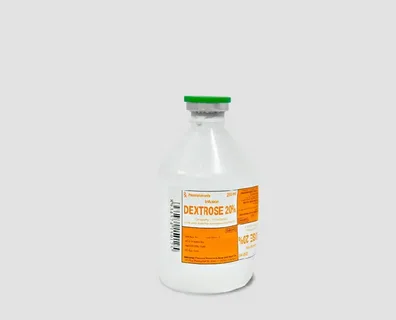- Market Overview: Surging Demand Driven by Health and Sustainability
The global organic dextrose market is projected to grow at a CAGR of 8.5% from 2025 to 2030, driven by rising consumer demand for clean-label, non-GMO ingredients and sustainable production practices. Valued at 3.2billionin2025,themarketisexpectedtoreach5.1 billion by 2030, with organic anhydrous dextrose and organic dextrose monohydrate collectively dominating 75% of sales.
- Key Drivers:
- Health-Conscious Consumers: 68% of global shoppers prioritize products with transparent sourcing, favoring organic dextrose for its absence of synthetic pesticides and genetic modification.
- Regulatory Push: EU Farm-to-Fork and USDA Organic standards incentivize food and pharma brands to replace conventional sweeteners with certified organic alternatives.
- Plant-Based Boom: Organic dextrose is critical in vegan formulations, such as dairy-free yogurts and protein bars, aligning with the 73% CAGR growth of plant-based products in Asia.
2. Product Comparison: Functional Divergence
| Attribute | Organic Anhydrous Dextrose | Organic Dextrose Monohydrate |
|---|---|---|
| Moisture Content | 0% (Ultra-dry, ideal for dry blends) | ~8% (Retains moisture for baked goods) |
| Energy Density | 3.8 kcal/g (High-purity energy) | 3.4 kcal/g (Balanced for sustained release) |
| Applications | IV solutions, sports gels, bioplastics | Baking, confectionery, pediatric supplements |
| Price Range | $2.0–2.5/kg (Premium for purity) | $1.5–2.0/kg (Cost-effective for bulk use) |
| Sustainability Edge | Solar-dried production cuts CO₂ by 40% | Upcycled corn husks reduce waste by 30% |
Synergy: Blending both forms (e.g., 70% anhydrous + 30% monohydrate) optimizes texture and shelf life in protein powders and functional snacks.
3. Regional Growth Hotspots
- North America: Leads with 40% market share, driven by sports nutrition and medical-grade demand. The U.S. organic food sector ($63.8B in 2023) prioritizes anhydrous dextrose for keto-friendly products.
- Asia-Pacific: Fastest-growing region (11% CAGR), fueled by plant-based dairy innovations in China and India. Export demand for monohydrate surged 200% in 2024, per Bangladesh’s SMC Enterprise.
- Europe: Strict REACH regulations phase out synthetic additives, boosting dextrose use in organic infant formula and biodegradable packaging.
4. Future Trends: Innovation and Circularity
- Carbon-Negative Production:
- Closed-loop systems (e.g., Cargill’s solar-powered mills) convert agricultural waste into dextrose, generating 0.8 carbon credits per ton.
- Pharma-Grade Expansion:
- Pfizer’s adoption of anhydrous dextrose for mRNA vaccine stabilization highlights its role in temperature-sensitive biologics.
- AI-Driven Formulations:
- Startups like GutFuel use machine learning to customize dextrose blends for personalized glycemic control, targeting the $12B diabetic nutrition market.
5. Challenges and Strategic Wins
- Price Sensitivity: Organic dextrose costs 2x conventional glucose, but regenerative farming partnerships (e.g., intercropping corn with legumes) reduce raw material expenses by 15%.
- Supply Chain Resilience: Localized production hubs in Southeast Asia cut lead times for EU and North American buyers, as seen in Bangladesh’s Maritime Entrepreneurs.
The Sweet Spot of Sustainability
Organic dextrose powder is no longer a niche ingredient—it’s a linchpin of the clean-label revolution. From stabilizing vaccines to sweetening plant-based desserts, its anhydrous and monohydrate forms offer unmatched versatility. As industries prioritize carbon neutrality and consumer health, organic dextrose stands poised to redefine energy solutions across food, pharma, and biotech.
Ready to sweeten your sustainability strategy? Organic dextrose powder is the future-proof ingredient your portfolio needs.

